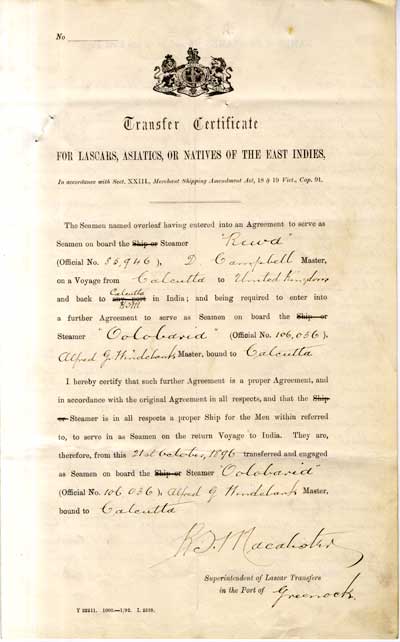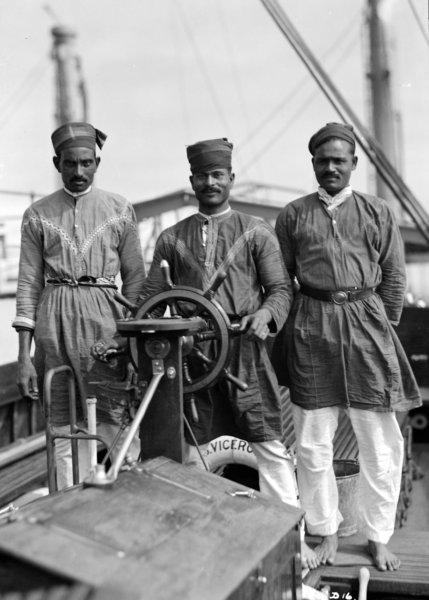Part 5
Indian Born, America Made
In
the last post I wrote about grandfather's carved life, his status as an alien
within the confines of immigration policies and no possibility of citizenship. Vivek
Bald, aptly comments, “Denied official belonging, they became part of
another nation, a nation beneath a nation in working class neighborhoods of
color from New York.” This is the environment that grandfather lived in as
he would have experienced the Depression Era, the bread and soups lines snaking
around the diverse communities in New York City.
Observes
the beginning of WWII, Germany invasions in Poland, Belgium, and France. The
bombing of Pearl Harbor in December 1941, the interments of Japanese, the arc
of Franklin D. Roosevelt presidency, the buildup of war-time munitions industry
and of course the mass call for men to register for the draft during WWII.
Surprisingly
grandfather registered for the WWII Fourth Registration also known as the “Old
Man Registration” men who were born between 1877- 1897, those not serving in
the military.
Grandfather
listed multiple address, not unusually for the Bengalis to do, sometimes boarding
together to save on expensive. Interestingly, the birth year he gave was 1894.
My grandmother shared there was a 20-year difference between their ages. It would
put his birth year 1900, the same year he filled out on the marriage record. What
a gem was the name of the town in India “Nadia” relatives has often said he
grew up not far from Calcutta.
Check
off as “White” and not “Indian” with a dark brown complexion, the lens of the
interviewee biases. I know where he was 82 years ago on Monday April 27,
1942.
It was a busy month for grandfather, beginning in April 1942,
under the Immigration and Naturalization Service grandfather face another
hurdle. He and others who were not citizens or naturalized would require
filling out a detailed alien registration form, “Alien Files (A-Files).” What
is most alarming, a file could be generated, without the action or the consent
of the alien, if the INS felt a need to “initiated a law enforcement
action on the individual.” I can only imagine the fear and anxiety he
experienced; I am not sure if grandfather or other Bengalis did comply.
Portraying in the background as the heightened fears of the U.S.
had against Germans, Japanese and other immigrants during the war played out.
It seems plausible for such action. The process to obtain these records is
still ongoing.
Illustrated the areas: 155th St.
north, Harlem River Dr. & Lexington Av. East, 110th St. south and
Manhattan Av. west the shooting, riots, the mayor addressed to the crowds and
the enforcement of 10:30 pm curfew.
I could not help noticing in India, in the Bengal region and in
Calcutta due to the war, a devastating famine occurred in 1942-1943. I am not
sure if this affected any family members back home. I can only wish they were
not weakened greatly. The conversation in the Bengali community in Harlem was
most likely a significant cause of concern, discussions, and constant
communications between the families back home.
After the war, many sighed with great joy, grandmother
mentioned "how happy everyone was, many smiling faces." They
would have observed if they did not participate in the celebration on May 7,
1945, in Times Square of the Japanese surrender in WWII.
The post war years, grandfather maintain his residence in Harlem with his family and the connections to the Bengali ship jumpers.
Top image: 1950
Census, grandfather with my grandmother, my uncle Wahab are all living in the newly
developed housing complex on 770 E. 165th Street, Bronx, New York. He
is 47 years old and working at a hotel as a cook, which he was famous for. My
father, as a young boy.
Uncle
Wahab and father spent a great deal of their lives in the mosque and the
Bengali community. One story uncle shared, while growing up in 1950s Harlem, visits
to the mosque. He recalled the congregation of the men in prayers, lessons
followed, the many activities, the dozens of children playing in the
background, and most striking was Hindi and Bangla spoken, mingling with
English. Then, out comes, many enormous assortments of trays filled with food,
enough to feed several blocks of families in Harlem. “Uncle Wahab, would say,
“if you went home hungry it was your fault.”
An ad announcing
the opening of a new mosque. The New York Age. October 28, 1950.
Grandfather may have felt hopeful and perhaps may have moved to
start the process of citizenship. The family did not have a story or ever discussed it. I would never know, but I hoped he had a chance! Grandfather's
death was a week later after New Year on January 6, 1954.
I find it intriguing the Bengali stories were lost to the
immigration narrative. As the years passed, many of the seamen migrated to
other parts New York City boroughs', to New Jersey, Connecticut, and Philadelphia.
Forever changing the landscape of this tight-knit community.
Portrait painting of my grandparents. New
York City. C1942-1944. Owner private property.
Grandfather attempted to establish his identity in this country as
an American, yet he managed to launch numerous businesses with many of his
fellow countrymen, founded a Masjid, now it is the largest and international Masjid in upper Manhattan. He married an American, had my father and
created valuable lifelong friendships, including Americans. Today, many of his
descendants are loving individuals with families, educated, with successful
businesses and careers, active in many communities' and religious matters. His
descendants are still preserving his stories, such as this blog.
Sources:
Goni, Abdul, Line 28, Sheet 26, Enumeration District 3-952,
Assembly District 7, Bronx County, New York; Seventeenth Census of the United
States, 1950; Record Group 29, Records of the Bureau of the Census; National
Archives and Records Administration, Washington, DC, downloaded from Archives.Gov on April 15,
1950.
H. Con. Res.
63 Immigration and Nationality Act. STATUTE-66
Proclamation
2980 - Immigration Quotas
Record Daily News. (August 3, 1943). Harlem Riot
Aftermath. Newspapters.com. Retrieved April 20, 2024, from Daily News
South Asians America Digital Archives: South Asian
Americans You Should Know About
The New York Age. (October 28, 1950). The Academy of
Islam, Int'l, Inc. 231 Lenox Avenue. Newspapers.com. Retrieved February 18,
2024, from The Academy of Islam

































